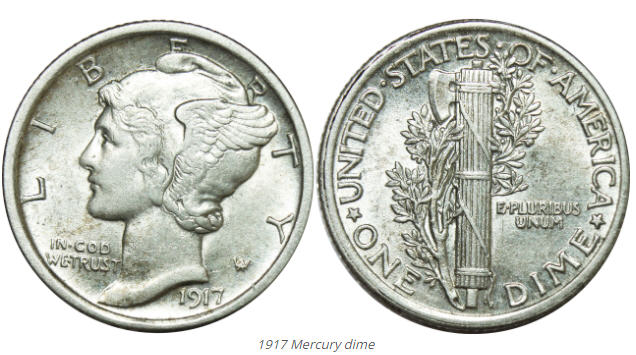
This is a Mercury dime. This particular 1917 “full band” uncirculated edition is worth over $8,000. It got me to wondering: How many thousands would my extensive dime collection be worth?” The shocking answer stunned me.
Few people know that when I was young, I was a serious coin collector. From age six until 25, I collected Mercury dimes.
Fun fact: The Mercury dime was minted between 1916 and 1945. It was replaced in 1946 by the Roosevelt dime after the death of FDR in April 1945, as a way to honor his legacy.
The current value of Mercury dimes ranges widely. Some of them are worth barely more than their face value. But a 1935-S Mercury dime (The “S” means it was created at the San Francisco mint) has been appraised at $90,000. And one exceptionally well-preserved edition of the 1938-S Mercury dime has been assigned a value of $364,000 – or roughly $363,998 more than the current value of my Topps 1963 Major League baseball card of Willie Tasby of the Washington Senators. (He had a bad year that year.)
Several factors influence the market value of a coin: How many were produced, whether they ever entered into circulation, the coin’s overall condition, and whether or not they were ever part of Tim Jones’ private collection, in which case they would be considered primarily for their meltdown value.
When I first started collecting, I often asked my mother to take me to the bank where I asked the tellers whether they had any Mercury dimes they could exchange for my Roosevelt dimes. Initially, they were happy to trade with me. It was when I started asking the tellers if they’d trade me their Mercury dimes for my 1963 Willie Tasby baseball card that I started to run into some serious resistance.
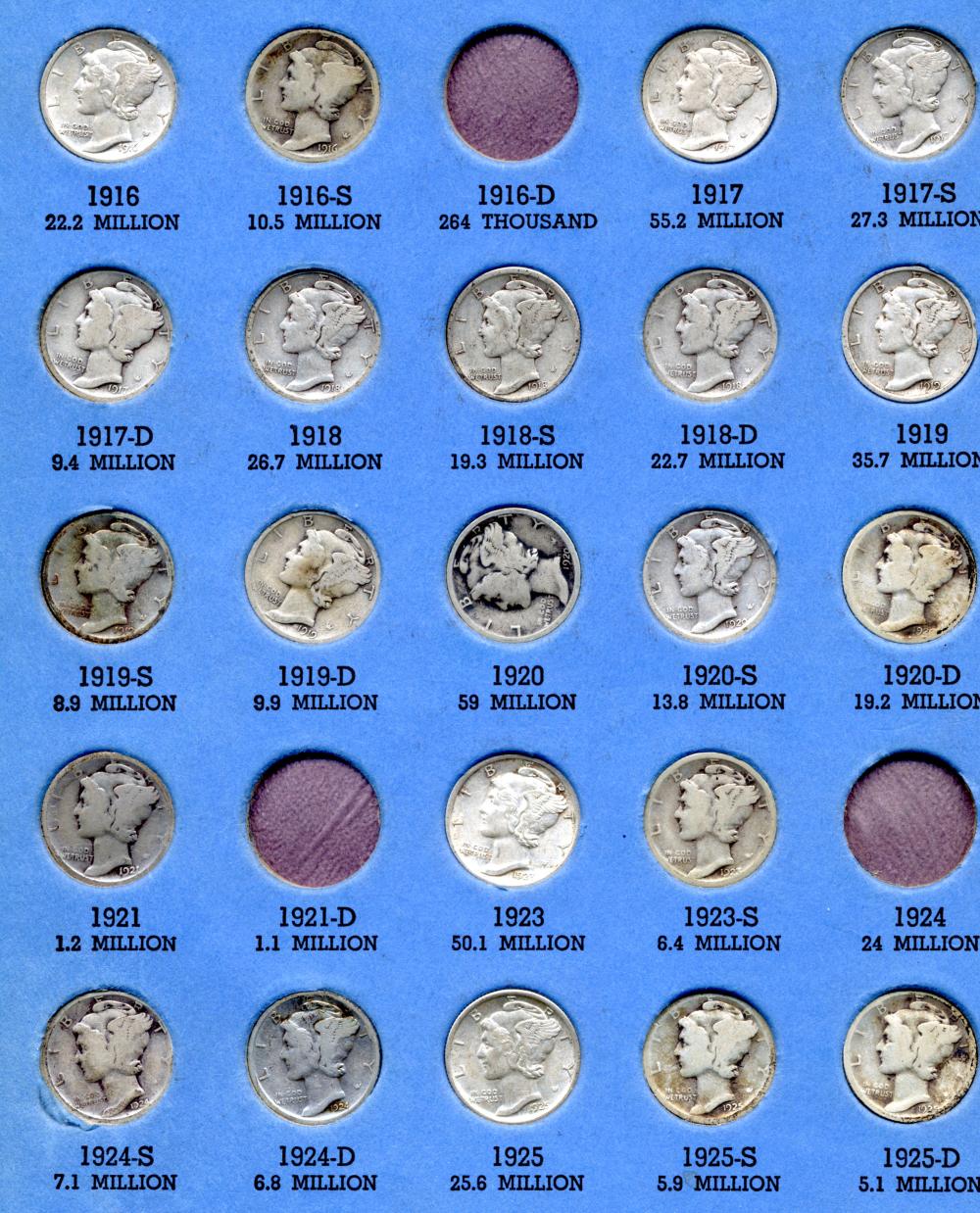
This is a page from my Mercury dime collector’s book. Look at how many of the dates I had filled in! As I drove to the the coin shop to get my collection appraised, I reflected on an impending life-changing decision: Might
this be the day I finally can retire? What car would I buy?
For reasons unknown, by the early 1960s Mercury dimes suddenly became almost impossible to locate – much like my middle school classmates, who, during recess, apparently decided hanging out with a coin-collecting nerd like me might ruin their chances to get girls to go out with them.
As a budding numismatist (which is nerd speak for coin collector), I bought a coin book specifically designed to display Mercury dimes, with a space for every year and every mint where the coins were produced – Philadelphia, Denver or San Francisco. By the time I reached age 18, I had populated my collector’s book with 42 dimes – a figure that exceeded the total number of dates I had gone out on in my life by 40. Some of them were rather scuffed up and had worn-out faces, but others were very well preserved. Sorry if that last sentence was not clear. I was referring to my coins, not my two dates.
I had one coin that was either a 1917-S (valued, depending on its condition, at between $1,000 and $5,000) or a 1917-D (today worth only 25 cents). It was hard to tell whether it was an “S” or a “D.” So, I told everybody it was an S, thinking that might make me seem cool to girls. Fun fact: It did not.
My father always told me my dime collection would be worth something someday if I just held onto it long enough. As I got older, I thought about perhaps handing it down to one of my kids someday as a precious heirloom. I hid away my Mercury dime collection in the back of my closet, right next to my 1963 Willie Tasby baseball card – safe from any potential thieving intruders – for decades.
Fifty years after I saved my first Mercury dime, at the age of 56, I finally decided, for the first time in my life, to bring my rare coin collection to a reputable coin shop to have it professionally appraised.
In my mind I envisioned that our encounter would be like a scene from an episode of Antiques Roadshow. I could almost hear the life-altering words of the coin appraiser: “Tim, I would say your impressive assemblage represents one of the finest private collections of Mercury dimes I have ever seen. I see you even have the rare 1917-S coin, although at first glance I thought it might have been a 1917-D. I would say, based on the immaculate condition of your coins, conservatively, it has a current value of between $150,000 to $200,000.”
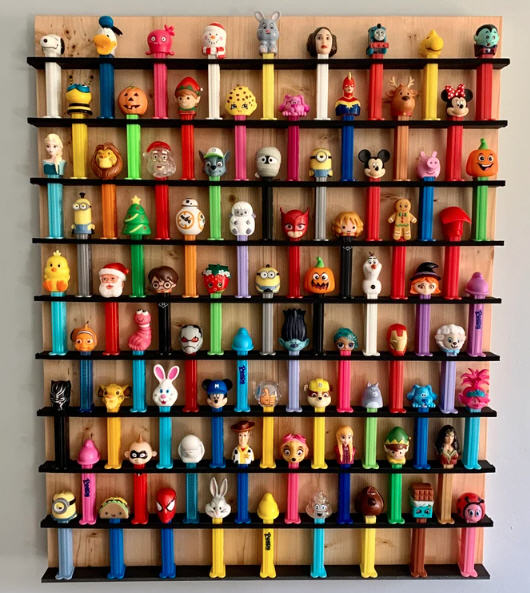
Did I mention I also have an extensive collection of over 100 PEZ dispensers? I’ve been collecting them for years. I’m sure someday they’ll be worth almost as much as my Mercury dime collection.
Oh My God! Can you believe it!!! Then I opened my eyes and realized I was still in my car in the parking lot. I entered the store. Over the past 50 years, my modest initial collection had swelled to 75 Mercury dimes, meaning the face value alone was $7.50. It did not take the appraiser long to return with his assessment: “I would say the current value of your collection is around $10.00. I’d be willing to give you $13.00.”
“What about my rare 1917-S coin? Isn’t that worth something?”
“You mean your 1917-D? Yeah. It’s worth about 25 cents, give or take.”
Seriously? I’d been holding onto my collection for over 50 years, and its value had increased by roughly the price of a large Wendy’s Frosty? I was completely deflated. I thought long and hard about what to do next. Should I continue to hold onto my collection and give it to my daughter someday – perhaps when its value had soared to $15.00? I finally decided to accept the coin store owner’s offer of $13.00 and I said goodbye to the “precious” coin collection I had zealously guarded for the past half century.
I no longer have a single Mercury dime. But I still have my 1963 Willie Tasby baseball card. I’m sure eventually it will be worth a lot of money. Someday. It’s just a matter of time.
That’s the view from the bleachers. Perhaps I’m off base.

Subscribe to my new View from the Bleachers YouTube Channel and request notifications to see my latest videos. And check out my new book, THE SECRET TO SUCCESS AND HAPPINESS (is Something I Have Never Figured Out. I’ Open to Suggestions).



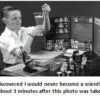
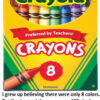
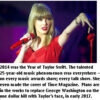





OMG…. I can imagine the look on your face when the appraiser told you his estimate…. I think you did right in divesting of the collection! LOL
Tim, I loved this!, and I am fascinated by coins! I have a few inherited from my mother’s parents and grandparents—Buffalo nickels, Indian head pennies, and a small number of Mercury dimes—nothing approaching your vast collection. I would have paid you $20. Too bad you never confessed this little hobby to me!
So funny, my friend!
I think you should have kept it just for sentimental reasons, but I guess you needed the money.
Hi Tim,
OK, I know times are tough and a dime is not worth as much any more, but wasn’t this emailed last week? I enjoyed reading again anyway 🙂
But if you’re like me and you watch to many mystery shows, you know he turns it around and sells the whole thing for thousands. Sigh…..